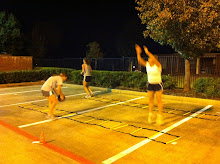

In most gyms, there's the cardio section and the weight training section. While men spend a lot of time in the weight lifting area of the gym, some women hardly ever visit there. They try to get toned ad lose weight by doing cardio workouts alone.
Many women think that weight lifting isn’t right for women and that if they do lift weights, they will end up looking bad.
The truth is that most women don’t understand what weight lifting can do for their body. There are too many common myths about weight lifting for women that make most women avoid doing strength exercises at all (except for the thighs and abs).
In this post, I want to talk about these myths and reveal what really happens to a woman’s body when she incorporates resistance training into her workout routine.
Myth #1 – Weight Lifting Will make you bulky
This is something that a lot of women are scared of and it’s the main reason why they don’t lift weights. Most women don’t want to have big muscles because this isn’t feminine. The truth is that this is a baseless fear. Most women simply don’t have it in them to become bulky.
To build big muscles, it’s not enough to simply lift weights. You need to have a lot of testosterone in your system, something men have and women have very little of. Most women, even if they spend hours in the gym for years on end, would find it nearly impossible to build really big muscles.
Without special supplements or a truly massive weight lifting routine over the space of years, most women will not become bulky. There is simply nothing to fear.
Myth #2 – Weight Lifting is less effective than cardio
During the 1980′s, people believed that doing cardio is the best way to lose weight. Today, research has revealed a widely different reality. The truth is that while cardio is a good way to burn calories and lose weight, resistance training can be even more effective.
Resistance training builds more muscle mass. This, in turn, helps to boost your metabolism because muscle tissue requires a lot of calories to sustain itself. Basically, the more muscles you have, the more calories your body burns naturally, even when you rest or sleep.
Doing an intense weight lifting workout can burn a lot of calories by itself and it can also produce a metabolic boost which will burn more calories for hours after the workout is done. So, if you’re trying to lose weight, you should definitely do regular weight training workouts. You will get faster results.
Myth #3 – Weight lifting doesn’t help you lose weight
When most women go to the gym they do so because they want to lose weight. One reason why many women think that weight lifting won’t help them achieve their goals is because when you add muscle tissue, you actually increase your weight.
However, you’re not really going to the gym to lose weight. You’re going to look better, firmer, toner, and tighter. Muscle tissue is dense, so it takes up much less space than fat. If you replace a pound of fat with a pound of muscle, you will weigh the same but you will look much firmer and leaner. So, while weight is important, it shouldn't be the only way you measure your progress. Your size and how you look is what counts. Don't get hung up on the number on the scale!
Myth #4 – Weight lifting works for men and not for women
This is utter nonsense. If you add muscle tissue you increase your metabolism whether you’re a man or a woman. If you add muscle you will look tighter and toner, whether you’re a man or a woman. While women won’t get bulky like man can, weight lifting helps both genders burn calories, boost metabolism and improve muscle tone.
Myth #5 – Women should lift small weights to not get bulky
This is one of the most disturbing myths of all since it’s so common. The truth is that you need to challenge yourself to get results. If you use small weights, you will not do an effective workout.
In addition, most people don’t know that there are two ways in which muscles grow: one way is called Sarcoplasmic Hypertrophy, and it happens when the muscle cells fill with a fluid called sarcoplasm. This makes the muscle cells become larger, giving people that bulky look.
The other way is myofibrillar hypertrophy and it happens when the muscle cells add more fibers, making them denser without giving them the bulky look.
The fact is that myofibrillar hypertrophy happens when you lift very heavy weights, the kind that you can do up to 6 reps with. On the other hand, Sarcoplasmic Hypertrophy occurs when you lift smaller weights, the kind that you can do up to 15 reps with.
So, lifting heavier weights can actually keep your muscle growth tight without making them big. One more way to not get bulky.




























